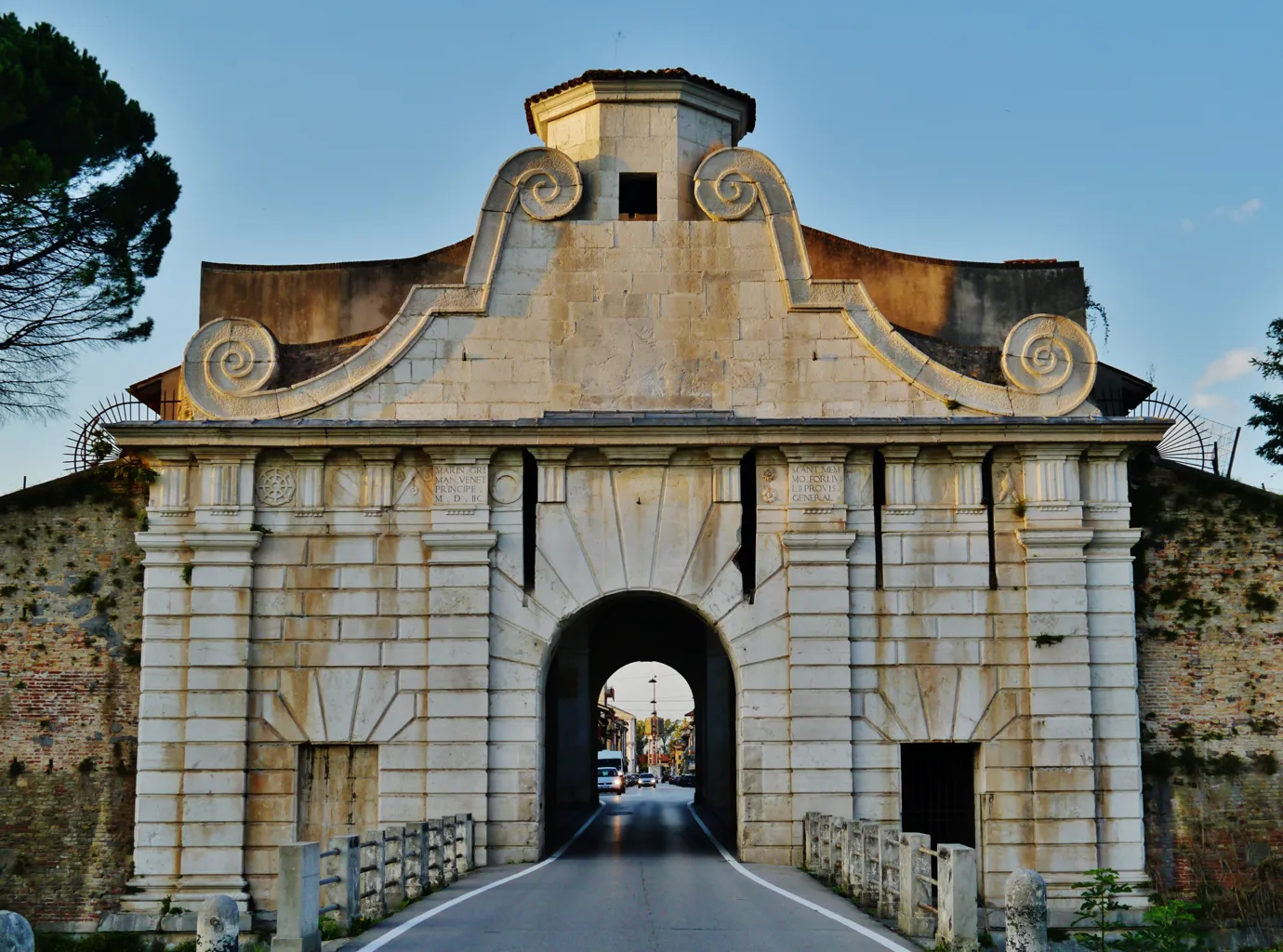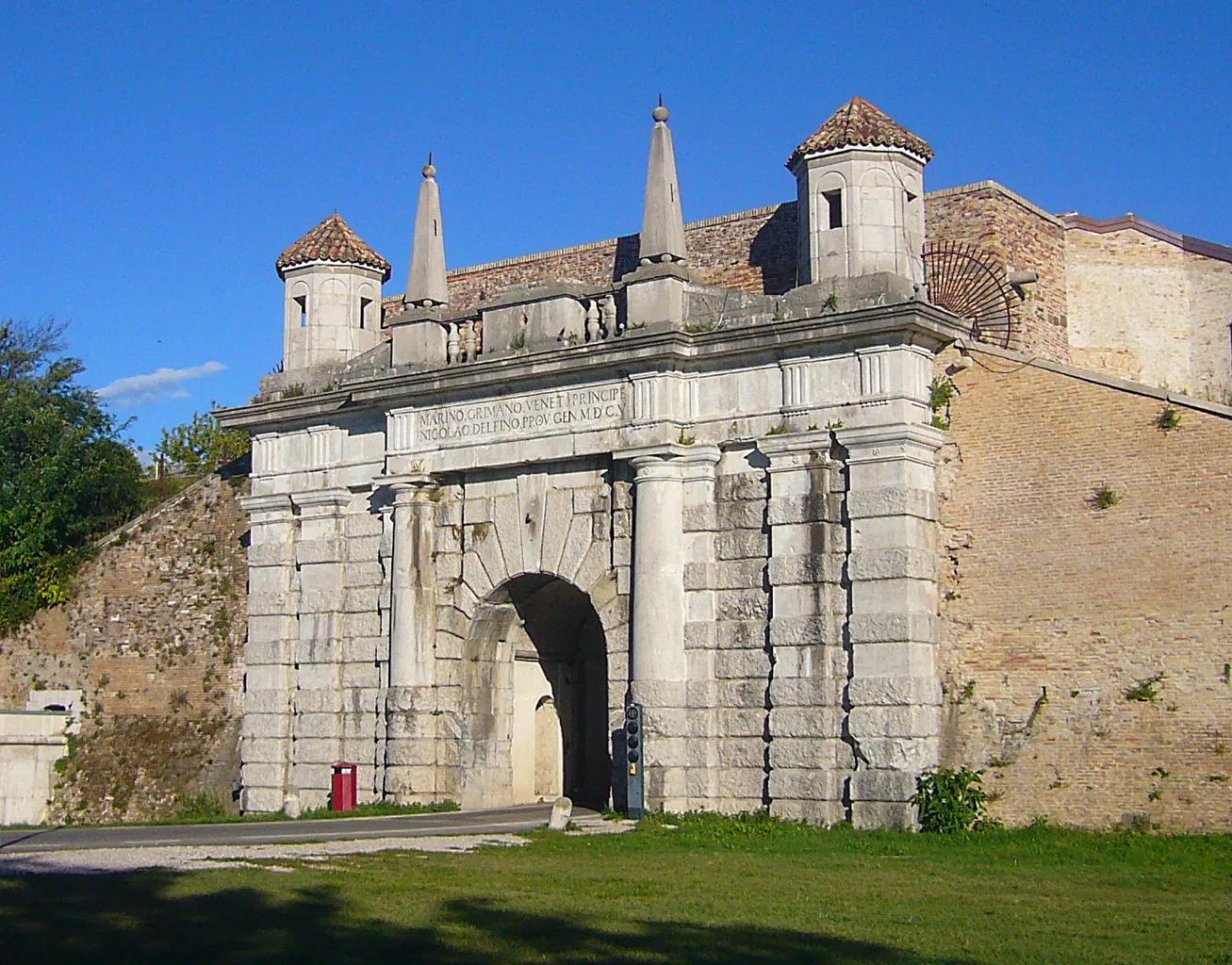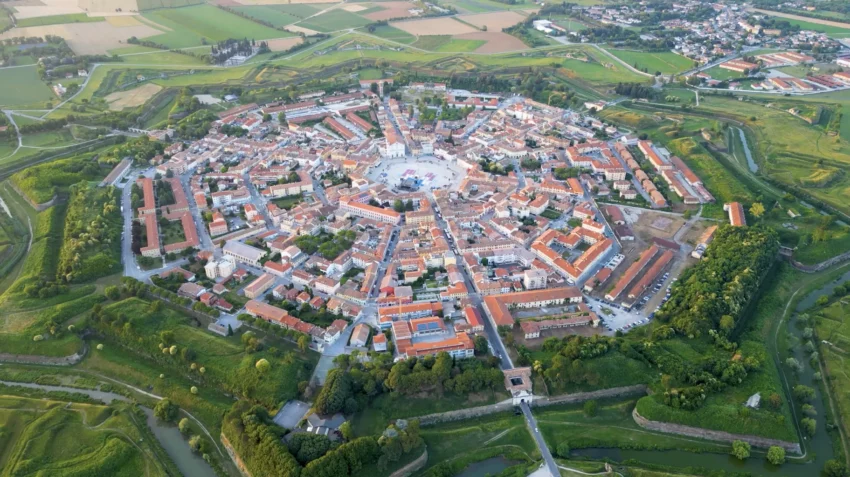The Establishment and Evolution of Palmanova
Palmanova, a remarkable example of a Renaissance planned town, was established by the Venetian Republic on October 7, 1593, a time when the design of cities was deeply entwined with military strategies and defense mechanisms. The town’s inception coincided with a period where several European powers were consolidating territories and constantly preparing for conflict. Notably, Palmanova was constructed following the ‘starry’ model, characterized by the nine-pointed star fortifications, which were a response to the development of firearms that necessitated new defensive architectures.
Get your dose of History via Email

Architectural Design and Purpose
The strategic location of Palmanova at the central point of the Venetian Republic’s mainland and it being near the borders of Habsburg Austria was no accident. It served as a fortress and a military settlement designed to deter or delay attacks, particularly from the Ottomans, showcasing an intricate relationship between urban planning and military considerations in Europe at the time. The town’s layout was meticulous, with radially arranged streets emanating from a central hub, converging on an expansive central square. Conceived as an ideal town by the architect Vincenzo Scamozzi, the design of Palmanova reflected the humanist ideas of the Renaissance, which sought perfection and rationality in the urban environment.
Military Significance and Expansions
In its early years, Palmanova was less residential and more of a garrison town. It wasn’t until 1622, some 29 years after its founding, that the Venetian Republic encouraged people to take up residence by offering various incentives, such as tax breaks and the promise of free land. Throughout its history, Palmanova’s fortifications were augmented. Notable expansions include the addition of a second, larger, nine-pointed star in the 17th century and a third outer ring of fortifications, completed in 1813, which transformed its footprint into a 20-pointed star.

The Aftermath of Venetian Rule and Napoleonic Influence
As geopolitical dynamics shifted, so too did the sovereignty over Palmanova. After the fall of the Venetian Republic in 1797, ownership passed to Austria and later to France with the rise of Napoleon. Napoleon himself had a significant influence on the city, electing to use the town as a crucial military stronghold due to its strategic fortifications and perceiving its potential to serve as a pivotal defensive node in his campaigns. Following the Napoleonic Wars, Palmanova reverted back to Austrian control until 1866, when it became part of the Kingdom of Italy following the Third Italian War of Independence.
Palmanova in the 19th and 20th Centuries
The city’s military importance continued into the 19th and 20th centuries. During World War I, it served as a command base for Italian forces facing Austria-Hungary. The superbly engineered defenses that had so defined Palmanova’s earlier years had now become part of a considerable martial legacy, cementing the town’s place in military history. In World War II, the fortifications took on new roles; the outermost ring of the fortress was partially demolished by retreating German forces in 1945 to impede the advance of the Allies, a testament to the enduring significance of these historic defenses in European military strategy.

Palmanova Today
In contemporary times, Palmanova has embraced its heritage, presenting itself as a city museum alive with history and culture. It is a member of the Italian association ‘Borghi più belli d’Italia’ (The most beautiful towns of Italy) and attracts visitors from across the globe who come to marvel at its immaculate geometric layout and impressive fortifications. Nowadays, this once critical military fortress is admired for its artistic and historical significance, as well as its role in advancing urban design during the Renaissance period.
Recognition and Preservation
Recognizing its universal value, UNESCO enlisted Palmanova, alongside two other Italian sites, as part of the World Heritage Site ‘Venetian Works of Defence between the 16th and 17th centuries: Stato da Terra – western Stato da Mar’ in 2017. This acknowledgment serves not only as a testament to the singular beauty and intricate planning of Palmanova but also to its wider historical implications concerning defense strategies of the early modern era.
Conclusion
Palmanova stands as a testament to the genius of Renaissance urban planning, fortification design, and military strategy, preserving both the beauty and logic of its initial conception. Even today, Palmanova’s hexagonal layout and fortifications continue to draw interest and admiration from scholars, tourists, and historians alike, a reminder of the significant role it played in the defense of the Venetian Republic and later European powers. Its well-preserved streets and ramparts remain an enduring legacy, immortalizing a distinctive chapter in the annals of military and urban history.

